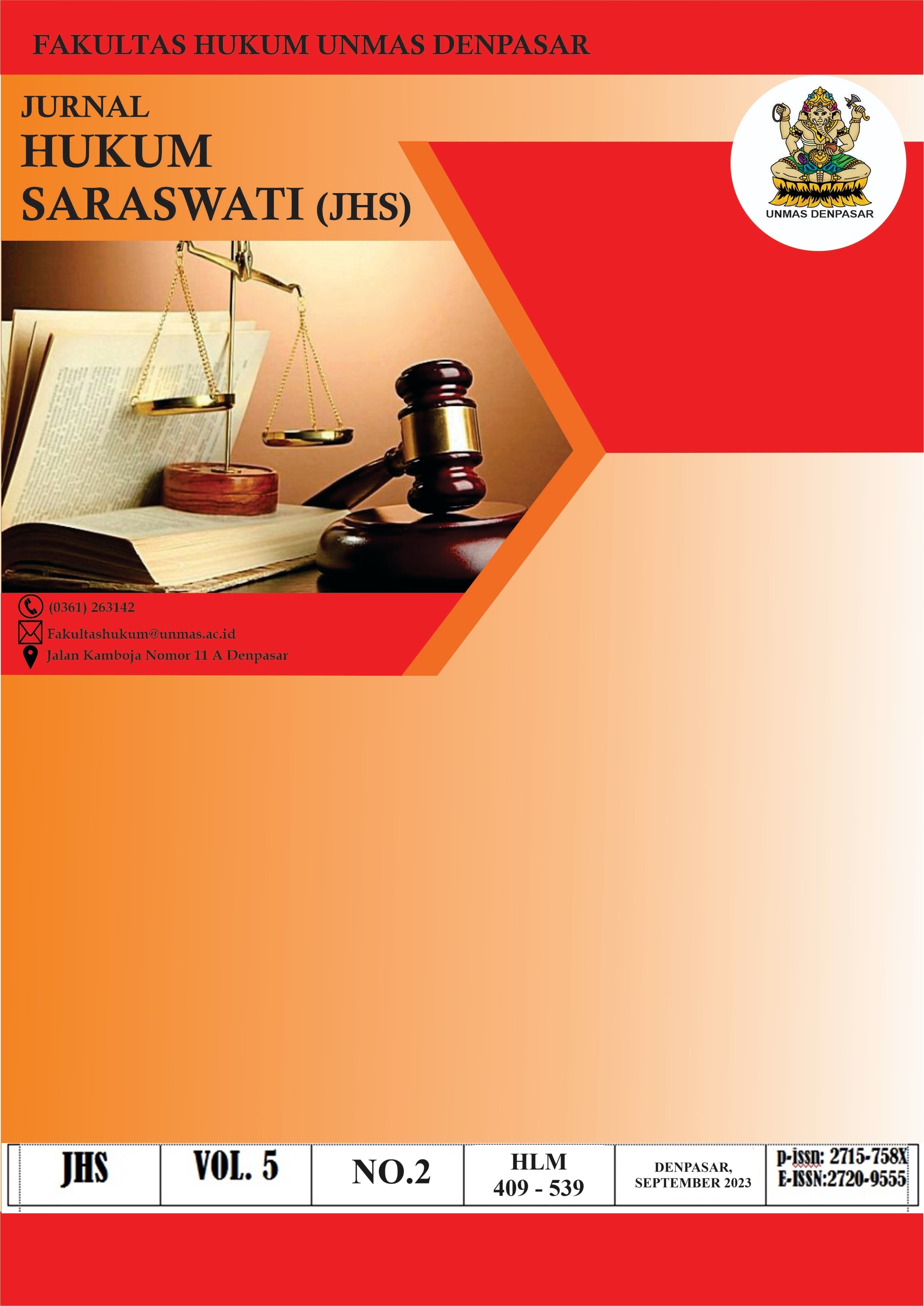KEDUDUKAN ANAK ANGKAT DALAM PEMBAGIAN HARTA WARIS MENURUT PERSPEKTIF HUKUM ADAT BALI
Keywords:
Inheritance Property, Adopted Children, Customary LawAbstract
In Indonesia, the phenomenon of child adoption is very common even though in each traditional region, there are various different procedures and systems. In some cases, adopted children completely sever their relationship with their biological parents, and in other cases there are also those who retain the right to continue their relationship with their biological parents. The definition of an adopted child in Bali is someone else's child who someone takes, cares for and treats as their own offspring. In its development, adoption of children in Bali is no longer in accordance with existing regulations, especially the conditions for children being adopted. The adoption of a child will also result in inheritance for the adopted child himself. This development certainly raises its own problems, both regarding the adoption of children and their inheritance. So based on the description above, the aim of this research is to examine the traditional procedures for adopting children according to the Balinese Customary Law Perspective as well as the position of adopted children regarding their parents' inheritance
References
Zaini, M. (2002). Adopsi Suatu Tinjauan Dari Tiga Sistem Hukum. Sinar Grafika, Jakarta.
Soepomo, R. (2000). Bab-bab Tentang Hukum Adat. Pradnya Paramita, Jakarta.
Gunawan, & Putranto, M. R. D. (2020). Kedudukan Anak Angkat Terhadap Harta Warisan Berdasarkan Hukum Waris di Indonesia. Media Juris, 3(2), 161–180.
I Nyoman Kuta Ratna (2004), "Hukum Adat Bali"
Meliala, D. S. (2016). Pengangkatan anak (adopsi) berdasarkan adat kebiasaan setempat dan peraturan perundangan di Indonesia. Nuansa Aulia, Bandung.
Soepomo, R. (2000). Bab-bab Tentang Hukum Adat. Pradnya Paramita, Jakarta.
Downloads
Published
How to Cite
Issue
Section
Citation Check
License
- Copyright notice
Authors who publish with this journal agree to the following terms:
- Authors retain copyright and grant the journal right of first publication with the work simultaneously licensed under aCreative Commons Attribution License that allows others to share the work with an acknowledgement of the work's authorship and initial publication in this journal.
- Authors are able to enter into separate, additional contractual arrangements for the non-exclusive distribution of the journal's published version of the work (e.g., post it to an institutional repository or publish it in a book), with an acknowledgement of its initial publication in this journal.
- Authors are permitted and encouraged to post their work online (e.g., in institutional repositories or on their website) prior to and during the submission process, as it can lead to productive exchanges, as well as earlier and greater citation of published work (See The Effect of Open Access).




